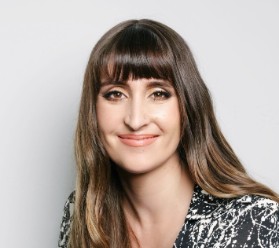Double-Masking for COVID Might Double the Hassle
Double-masking can prove more cumbersome for many. If the goal is to protect the mask underneath, perhaps consider a face shield or a strategy for cleaning the mask more frequently.
In infection prevention, the topic of double masking is relatively new. Only recently did health care workers opt to cover their N95 respirators with surgical masks to protect the mask even further. The Centers for Disease Control and Prevention (CDC) though, has reiterated that a cleanable face shield is preferred to a surgical mask in efforts to reduce N95 respiratory contamination, especially if surgical mask supplies are strained.
What though, do we do when the topic of double-masking becomes more public-facing? For many, this started with Anthony Fauci, MD, the director of the National Institute of Allergy and I
Saskia v. Popescu, PhD, MPH, MA, CIC

nfectious Diseases, wearing a doubled mask. That raised the question—do we need to be doing this? While Fauci has stressed that this is a personal decision and not a scientific one, it underscores the nuances of mask wearing. The timing also complicates and makes more pay attention to this conversation as 3 novel variants were recently identified and are growing in community prevalence. Moreover, as variants that have increased transmissibility continue to spread across the United States, the role of masks has become that much more important. It should be noted that the novel variants, like B.1.1.7, do not have novel powers that allow them to evade masks, but rather are more adept at transmission, which means that our continued vigilance in infection prevention, which includes masks, is vital.
Do we need to be double-masking? Really, this question relates to community mask usage and not in a health care setting, so let’s breakdown the pros and cons for discussions with health care workers. Mask efficacy comes down to 2 things—fit and filtration. Double-masking is about improving either piece if your current mask is lacking.
A good mask not only seals around your nose and cheeks, but also under your chin. The goal is to avoid inwards and outwards emissions. Mask efficacy is also about filtration and the CDC stresses that cloth face coverings should have at least two layers—the goal is tightly-woven fabrics that can be washed and even have a place for a filter.
If you’re wearing a cloth mask that is single layer or a surgical mask that is poorly fitted, then double-masking might help. The challenge though is that it’s not always easy. From fit to positioning and even donning/doffing, a double-mask can prove more cumbersome for many. If the goal is to protect the mask underneath, perhaps consider a face shield or a strategy for cleaning the mask more frequently.
Many have cited challenges though with how to explain this without discouraging people—if they’re unable to wear a mask or feel their current mask fits well and meets the filtration guidance, are we instilling a sense of unease? If one feels that their general mask is poorly fitting or does not meet the filtration recommendations, what are the options? In general, most encourage a cloth mask on top of a surgical mask or another cloth mask. There are some things to remember—not a lot of studies have been done on cloth mask quality, let alone double-masking. The strategy is theoretical but rooted in the notion of a mask that fits well and has layers of filtration will ultimately protect the wearer and those around them. A single mask that fits you and has multiple layers is better than two that don’t fit you well. When making the decision to single- or double-mask, the conversation and strategy should focus on the two key pieces—fit and filtration. Masks are a critical piece to COVID-19 prevention, but not the only one and while we discuss double- or single-masking, it’s important not to lose track of all the pieces to COVID prevention. Risk reduction is additive and a well-fitted and filtered mask is one piece to this prevention strategy.